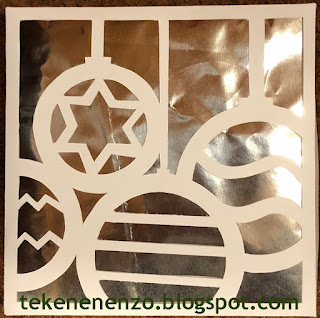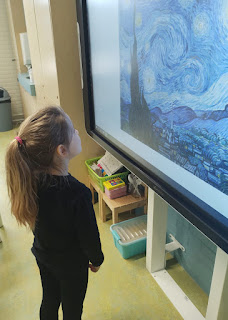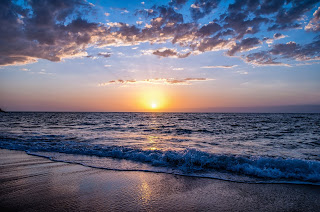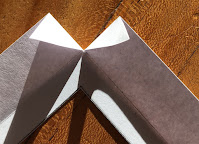 made by students of grade 5/6
made by students of grade 5/6You need:
- white cardboard 21 by 21 cm
- colored glace paper 14,5 by 14,5 cm
- cutting knife
- cutting mat
- glue
Too difficult or not enough time? Skip step 1 and 2.
Step 1
Draw a square at 2 cm from the edges, this is the outside of the frame.
Step 2
Draw in this square another square at 3 cm of the edges: this is the front of the frame.
Step 3
Draw in the 15 by 15 cm square a simple winter or Christmas scene. Make the lines 1 cm wide and make sure they are on 4 sides attached to the 1 cm wide frame. See pattern below.
Step 4
Color the parts you have to cut out grey.
Step 5
Cut out the grey parts.
Step 6
Cut the corners diagonally, see pattern.
Step 7
Fold the lines of the 15 by 15 square.
Step 8
Stick the corners.
Step 9
Stick the glace paper in the frame.
Elements of art: line, form, space.






















































